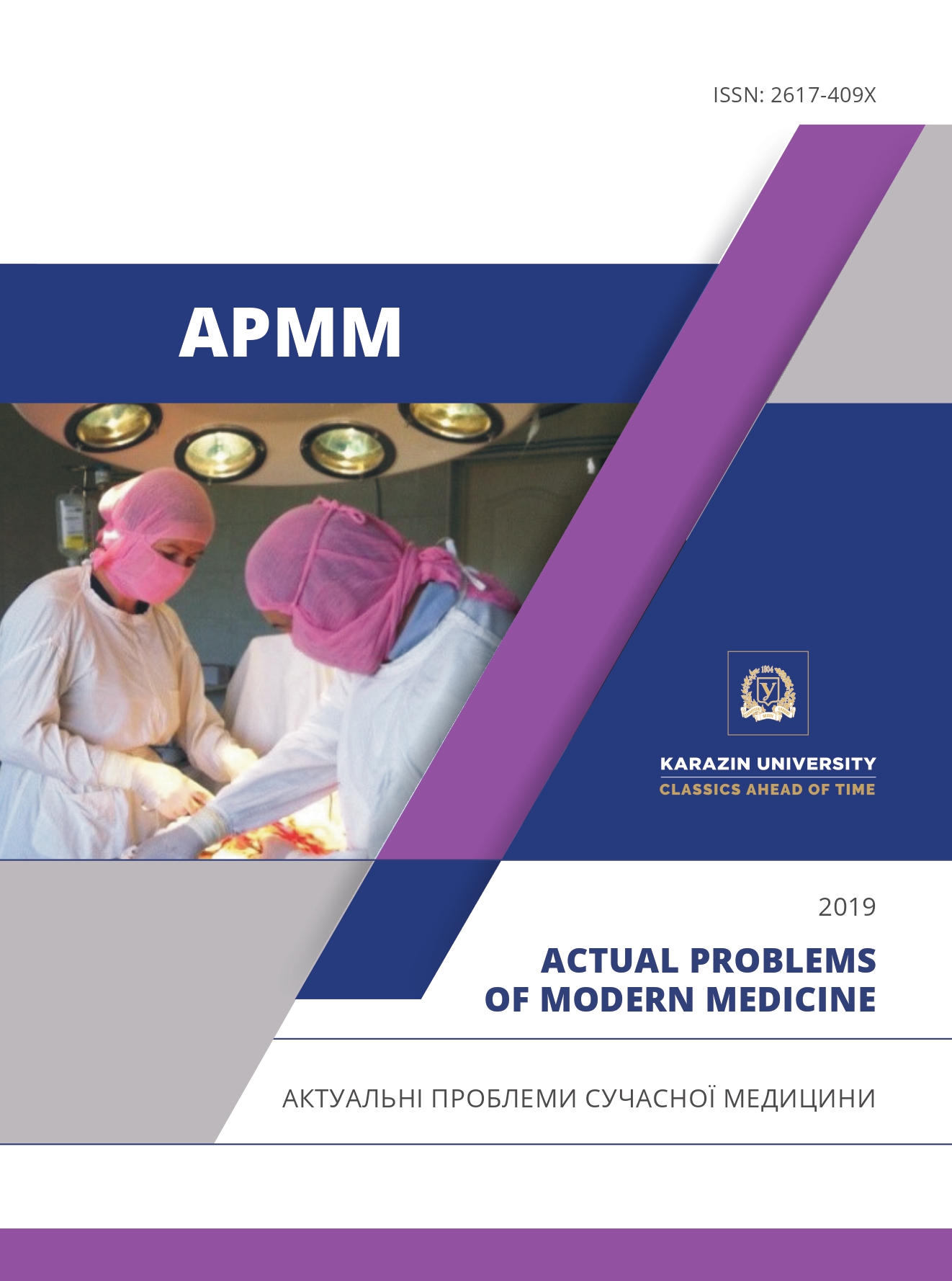Особливості клінічного перебігу серцево – судинних уражень на фоні тиреотоксикозу
Анотація
Актуальність теми захворювань щитоподібної залози зумовлена зростанням їх кількості у світі та в Україні зокрема за останні 5 років, а також тим, що сумарна частота різних форм патології щитоподібної залози навіть поза зонами зобної ендемії становить близько 20% від загальної захворюваності.
На прикладі клінічного випадку розглянуто питання діагностики, тактики ведення та особливості клінічного перебігу серцево – судинної патології на фоні тиреотоксикозу за відсутності, протягом тривалого часу, адекватної терапії.
Тиреотоксикоз призводить до виникнення ранніх ускладнень зі сторонни серцево – судинної системи, які визначають подальший прогноз якості життя хворого. Серцеві ефекти тиреотоксикозу найбільш небезпечні для осіб похилого віку, але саме у них вони нерідко домінують в клініці. Складність в постановці діагнозу у них обумовлена, в тому числі, частою відсутністю офтальмопатії. Під час розвитку миготливої аритмії наявність кардіальних симптомів може розширюватись, вказуючи на прискорений розвиток серцевої недостатності. Тому ведення пацієнтів з серцево-судинною патологією на фоні тиреотоксикозу має свої особливості, які повинні враховуватися в лікуванні.
Завантаження
Посилання
Fadeyev VV. (2017). Review of American Thyroid Association guidelines for diagnosis and management of hyperthyroidism and other causes of thyrotoxicosis. Clinical and experimental thyroidology.;13(3):45-56 [In Russ.]
Marusenko I.M., Petrova E.G. (2017).HYPERTHYROIDISM AND ATRIAL IBRILLATION. Rational Pharmacotherapy in Cardiology;13(3):398-402. [In Russ.]
2018 ESC/ESH Guidelines for the manage ment of arterial hypertension / BryanWilliams Giuseppe Mancia Wilko Spiering Enrico Agabiti Rosei Michel Azizi Michel Burnier Denis L Clement Antonio Coca Giovannide Simone Anna Dominiczak// European Heart Journal, Volume 39, Issue 33, 01 September 2018, Pages 3021–3104.
2016 ESC Guidelines for the diagnosis and treatmen to facute and chroniche artfailure: The Task Force for the diagnosis and treatmen to facute and chroniche artfailure ofthe European Society of Cardiology (ESC). Developed with the special contribution of the Heart Failure Association (HFA) ofthe ESC / Piotr Ponikowski Adriaan A Voors Stefan D Anker Héctor Bueno John G F Cleland Andrew J S Coats Volkmar Falk José Ramón González-Juanatey Veli-Pekka Harjola Ewa A Jankowska // European Heart Journal, Volume 37, Issue 27, 14 July 2016, Pages 2129–2200.
2016 ESC Guidelines for the diagnosis and treatment of acute and chronic heart failure: The Task Force for the diagnosis and treatment of acute and chronic heart failure of the European Society of Cardiology (ESC)Developed with the special contribution of the Heart Failure Association (HFA) of the ESC // Eur. Heart J.-2016. – Vol. 37 (27).– P. 2129–2200.
2016 ESC Guidelines for the managemen to fatrial fibrillation developedin collaboration with EACTS / Paulus Kirchh of Stefano Benussi Dipak Kotecha Anders Ahlsson Dan Atar Barbara Casadei Manuel Castella Hans-Christoph Diener Hein Heidbuchel Jeroen Hendriks // European Heart Journal, Volume 37, Issue 38, 7 October 2016, Pages 2893–2962.
P.Kirchhof, S.Benussi, Dipak Kotecha et al. (2016). ESC Guidelines for the management of atrial fibrillation developed in collaboration with EACTS. European heart journal, 2016.




